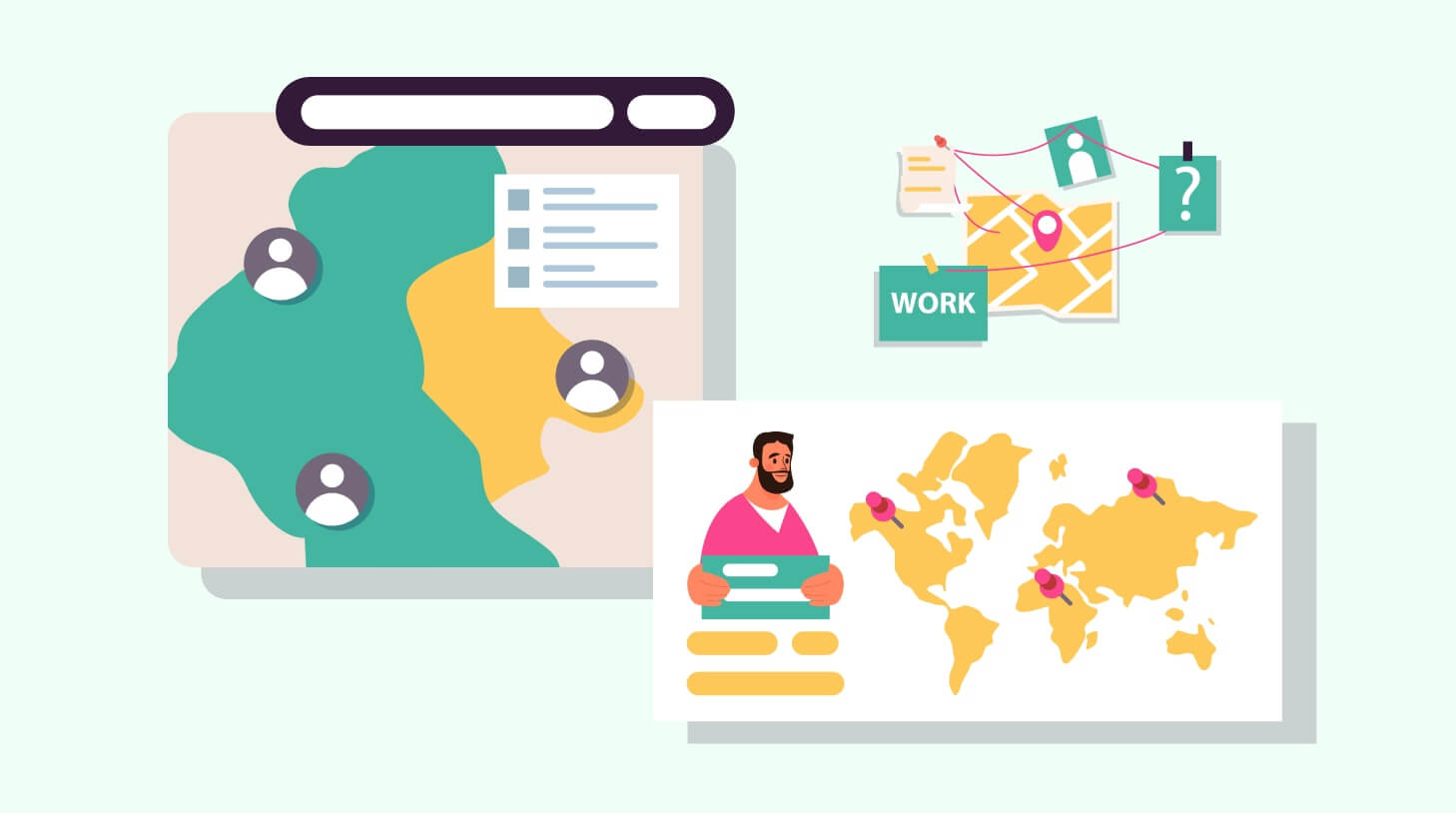How to build a new employee onboarding process
Employee onboarding is a structured process to integrate new hires into their roles and the company. It includes setting up workstations, introducing team processes and members, and providing necessary resources. The goal is to expedite the journey to peak job performance.

Building a strong onboarding process is the best way to welcome, and retain, new employees. Effective onboarding is all about planning ahead and thinking from your new employee’s point of view. It doesn’t begin and end on your new hire’s first day with you. It starts at the beginning of your hiring process and ends when your new employee is fully settled into their role.
Are you onboarding remotely? These remote onboarding FAQs will give you a head start, and you’ll also want to read insights from real-life remote employers on standardizing the onboarding of remote employees.
Here’s a planning timeline and some checklists (plus this onboarding new hire checklist) that HR professionals and hiring managers can use to design a good employee onboarding experience:
Contents
1. During the hiring process
Hiring and onboarding are often treated as separate. But their edges blur. New hires get their first impressions of your company during your hiring process, so your candidate experience efforts should be as thoughtful and welcoming as the rest of your onboarding efforts:
- Write a clear job description that gives your new hire a concrete list of their responsibilities.
- Tell candidates how you structure your hiring process and how long each stage is likely to take.
- Follow up early and often and communicate with candidates at each stage of the hiring process.
- Give candidates your full attention at interviews and respond to any questions they may have.
- Give candidates full information about reference checks and background checks.
2. During the offer stage
- Opt for a phone offer, if possible. Phone offers are more personal than email offers and can help you better communicate your enthusiasm for a candidate. It’s best to schedule your call ahead of time, so you don’t end up catching your candidate off guard.
- Follow up with an enthusiastic offer letter. Aim for a warm tone and include all relevant benefit details and contact information, so you can easily address any remaining questions.
- Be courteous during salary negotiations. Salary negotiations, done badly, can be tense and confrontational. Done well, they can help solidify your new employee’s value on your team and build a foundation of mutual respect. So, be open and try not to penalize candidates for being their own best advocates.
- Set a start date and share it with your new hire’s team. Offer some start date flexibility, if possible. It’s best to respect your new employee’s need to finish up projects and give appropriate notice with their current employer. Once you’ve set a date, share it with your new employee’s team so they can prepare to welcome their new colleague.
- Transfer your new hire’s information from your applicant tracking system to your Human Resource Information System (HRIS) or onboarding software. To avoid asking new employees to give you all their personal information again for your HRIS records, see if you can transfer their relevant details from your ATS. This will allow you to create a seamless transition for HR, hiring managers and new employees alike.
3. 1-2 weeks before your new employee’s first day
Prepare your new hire paperwork. Consider including the following policies and forms for new employees to fill out and sign:
- An Employment Agreement.
- A Non-Disclosure Agreement.
- An Employee Invention Agreement.
- An Employee Handbook.
- IRS form W-4.
- IRS form I-9.
- A direct deposit form.
Set up your new employee’s online accounts, including:
- Company email.
- Company instant message.
- Company HRIS software.
- Company password management software (LastPass, etc.)
- Company productivity software (Asana, Jira, etc.)
- Company ATS for members of hiring teams.
Prepare your new hire’s tech, including:
- A laptop.
- A monitor.
- A phone.
- A mouse.
- A keyboard.
- A headset.
And then:
- Confirm your employee’s new office phone number.
- Order business cards and/or a desk nameplate.
- Arrange for new employee ID card/building access fob.
- Schedule introductory meetings with key colleagues for the new employee’s first few weeks.
- Encourage team members (especially those on the interview panel) to reach out to your new hire to congratulate and welcome them prior to their start date. This goes a long way in establishing relationships early in the process.
- Ask your new employee to fill out an onboarding form, including information about allergies, food preferences and T-shirt size, if you’re including a company shirt in your welcome package.
- Make a welcome lunch plan for your new hire’s first day.
- Schedule a HR onboarding meeting for your new hire’s first day.
- Arrange for parking access, if needed.
- Plan your new hire’s first assignment.
- Arrange any relevant internal (or external) trainings required for the job.
- Send your new hire a welcome email telling them what to expect. Include maps, meeting details, etc. Make sure they know when to arrive on their first day and ask if they have any more questions.
4. The day before your new hire’s first day
Clean your new employee’s desk and set up their equipment and welcome kit. Consider including the following in your welcome kit:
- A welcome letter.
- New hire paperwork and HR documents.
- Technology setup instructions.
- A company notebook.
- A company T-shirt.
- A company mug.
- Pens.
- Stickers.
- A copy of your office map.
- A copy of your company org chart.
- A copy of your new hire’s first week schedule.
- A copy of a book relevant to your team culture.
And also:
- Make sure your new hire’s company email account is set up and forward regular team meeting invites to them.
- Send a message to your new hire’s department to remind everyone of their start date.
- Add your new employee’s email to relevant distribution lists and add their new phone number to relevant phone lists.
- Add your new employee’s details to your HRIS system, if you haven’t done so already.
- Add your employee’s desk to your office’s internal desk map.
4. On your new employee’s first day
- Have someone ready to welcome your new hire when they get to the office.
- Give your new hire a detailed office tour and make them aware of their schedule for their first few days.
- Arrange for a welcome meeting with your new hire’s manager to provide an overview of their new team, their role and how their success will be measured.
- Schedule time for new hire paperwork.
- Take your new hire out for lunch with some of their key team members.
- Allow your new hire some downtime to set up their new equipment, set new passwords and log in to their new accounts.
- Conduct a formal HR onboarding meeting, including details about benefits enrollment, company holidays and policies, company structure, team culture and review your company’s vision, mission and values. (If you have formally documented them.)
5. During your new employee’s first week
- Schedule your new hire’s regular 1:1 management meetings.
- Set clear goal and performance objectives for your new hire’s first 3 months, 6 months and year.
- Go over a 3 month roadmap for key projects they will be working on.
- Schedule meaningful work tasks that get them up and running.
- Provide quick feedback on their initial work tasks and establish management expectations for their performance.
- Schedule introductory meetings with each department, not just those the employee will partner but all departments throughout the company, so that they can get a full understanding of different parts of your business.
- Check in with them on a regular basis and respond to any questions they have.
6. During your new employee’s first 3 months
- Continue to have regular 1:1 meetings.
- Hold an informal 30 day check in to address any immediate concerns followed by a 90 day check in to see how everything is going.
- Ask for feedback on your onboarding process so you can improve the process for future new hires.
Frequently asked questions
- What is the onboarding of an employee?
- Onboarding is the process of integrating new hires into the organization. It includes activities that help new employees understand the company's structure, culture, vision, mission, and values.
- What is required for employee onboarding?
- Employee onboarding requires new hire paperwork, orientation, an introduction to company culture, mission, and values, and a review of the employee's role and responsibilities.
- What is a good onboarding process?
- A good onboarding process includes a checklist, making the hire official, completing a background check if necessary, establishing the schedule and job duties, and preparing and completing relevant new hire forms.
- How does onboarding impact new employees?
- Onboarding impacts new employees by helping them adjust to their roles and the company culture. It can improve job performance, increase job satisfaction, and enhance employee retention.
- How can feedback improve the onboarding process?
- Feedback from new employees can help improve the onboarding process by identifying areas of improvement. This can lead to a more effective and efficient onboarding experience for future hires.




